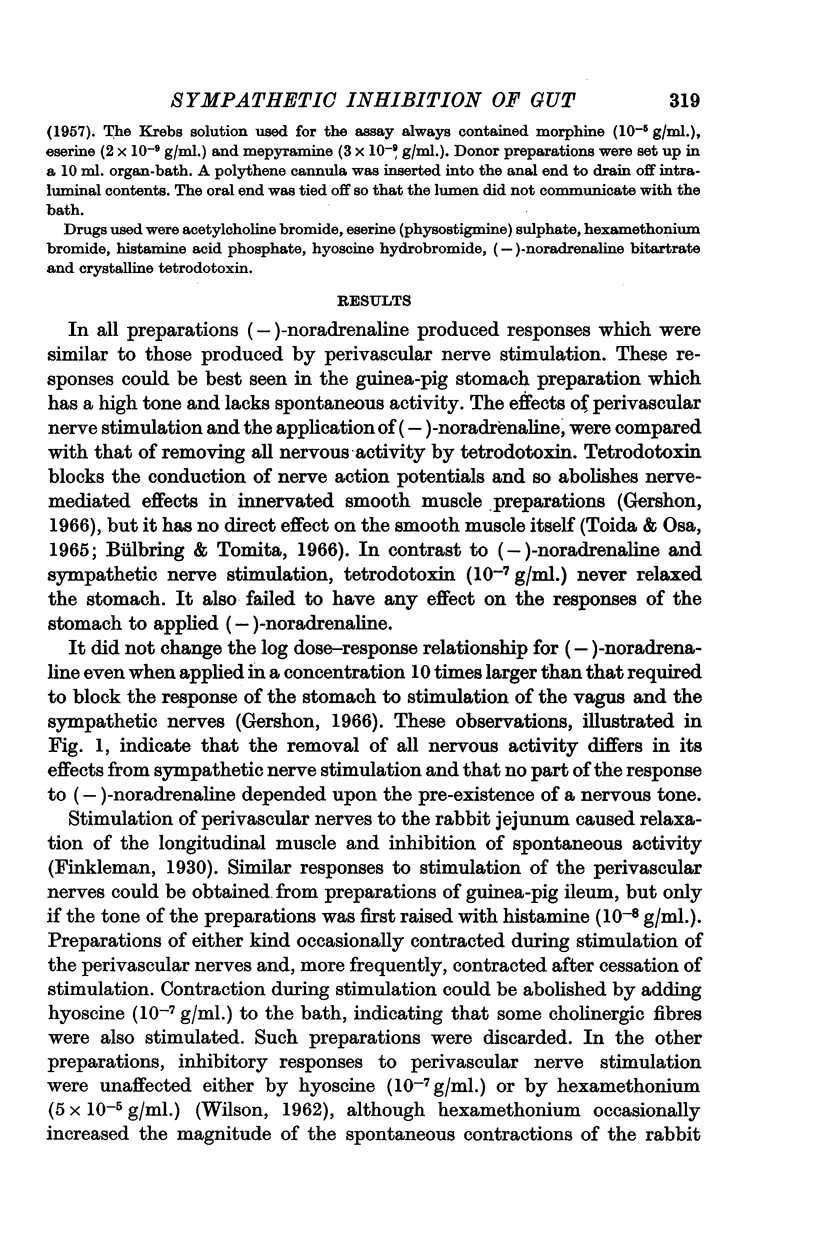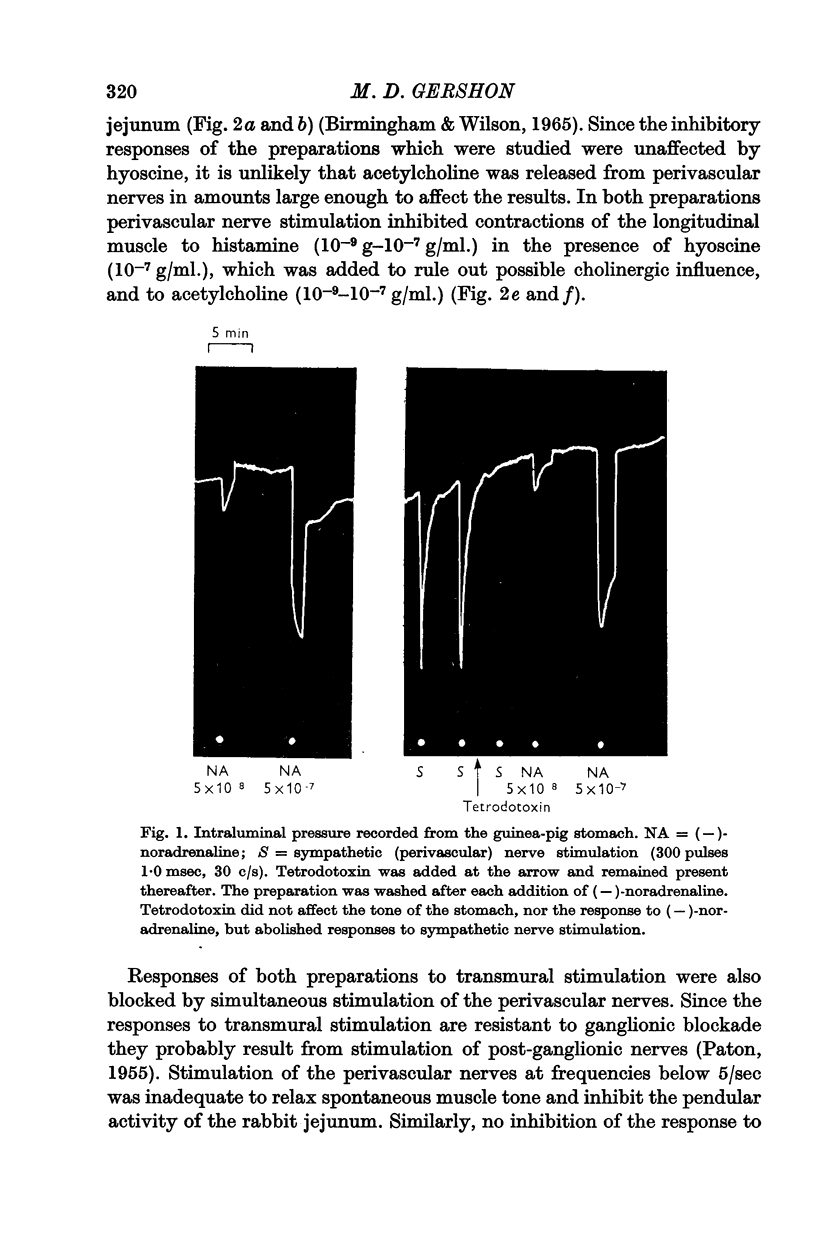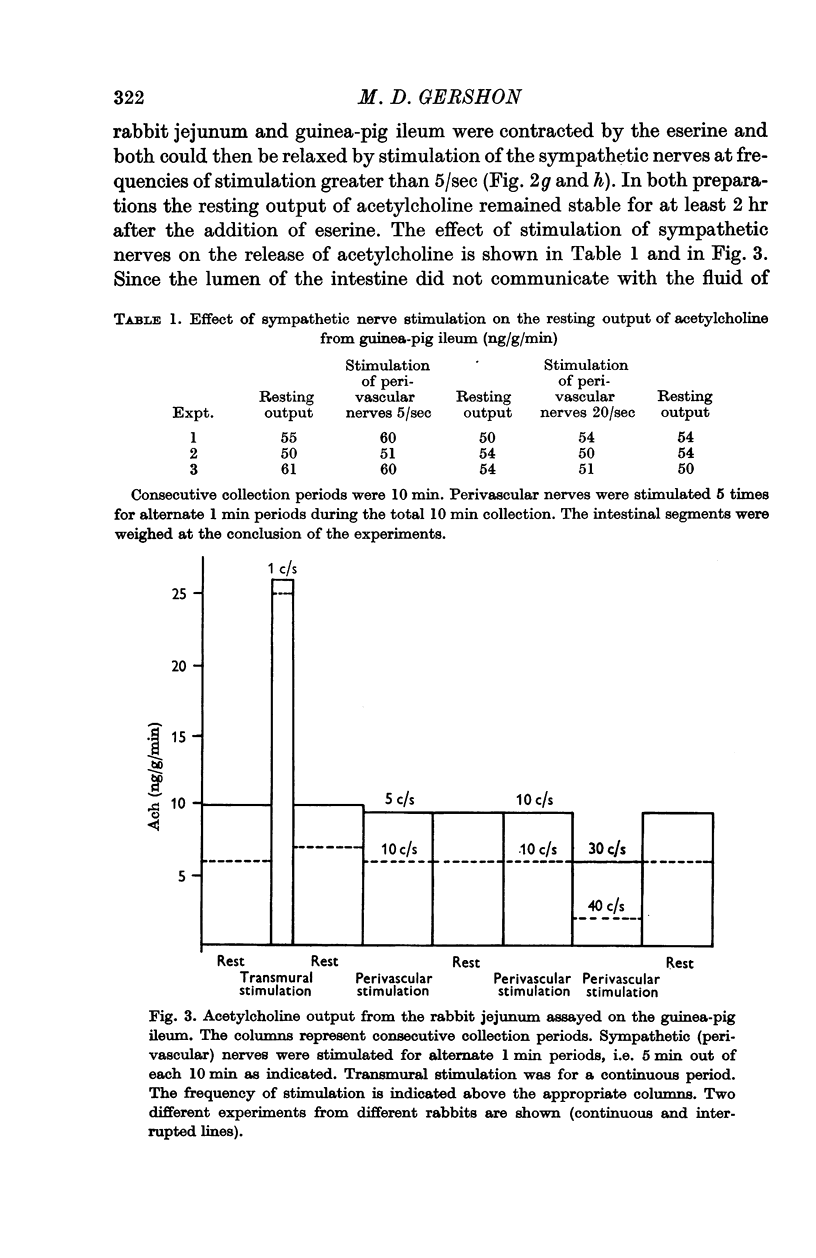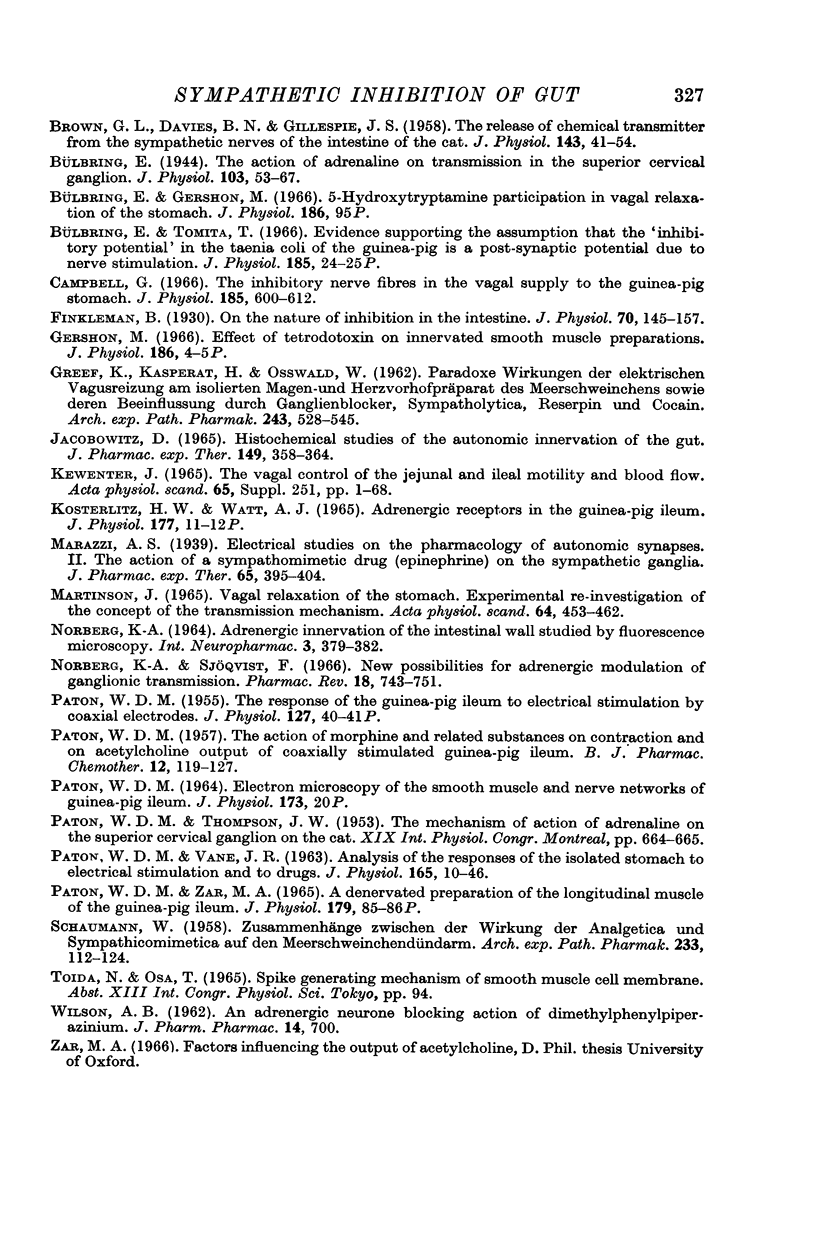Abstract
1. The mechanism of sympathetic nervous inhibition of gastrointestinal movement was investigated in order to determine whether the primary action of sympathetic nerve stimulation was on ganglia or on the smooth muscle itself.
2. The effect of sympathetic nerve stimulation did not resemble the effect of ganglionic blockade or that of removing all nervous tone with tetrodotoxin.
3. The same frequency of sympathetic nerve stimulation to the rabbit jejunum which inhibited the myogenic spontaneous activity blocked excitatory responses to transmural post-ganglionic cholinergic nerve stimulation and antagonized contractions in response to drugs acting directly on the smooth muscle.
4. Acetylcholine output was measured as an indicator of post-ganglionic nervous activity. In contrast to hexamethonium, stimulation of sympathetic nerves at frequencies of stimulation sufficient to relax the muscle did not reduce the output of acetylcholine.
5. Vagus nerves and sympathetic nerves to the guinea-pig stomach were stimulated individually and simultaneously in the presence of hyoscine. The relaxant responses to stimulation of the two nerves summated when they were stimulated simultaneously, indicating that the transganglionic vagal pathway was not blocked.
6. It is concluded that the effect of sympathetic nerve stimulation is due to the direct action of the released noradrenaline on the smooth muscle.
Full text
PDF










Images in this article
Selected References
These references are in PubMed. This may not be the complete list of references from this article.
- AMBACHE N., LESSIN A. W. Classification of intestinomotor drugs by means of type D botulinum toxin. J Physiol. 1955 Mar 28;127(3):449–478. doi: 10.1113/jphysiol.1955.sp005270. [DOI] [PMC free article] [PubMed] [Google Scholar]
- BIRMINGHAM A. T., WILSON A. B. AN ANALYSIS OF THE BLOCKING ACTION OF DIMETHYLPHENYLPIPERAZINIUM IODINE ON THE INHIBITION OF ISOLATED SMALL INTESTINE PRODUCED BY STIMULATION OF SYMPATHETIC NERVES. Br J Pharmacol Chemother. 1965 Apr;24:375–386. doi: 10.1111/j.1476-5381.1965.tb01725.x. [DOI] [PMC free article] [PubMed] [Google Scholar]
- BROWN G. L., DAVIES B. N., GILLESPIE J. S. The release of chemical transmitter from the sympathetic nerves of the intestine of the cat. J Physiol. 1958 Aug 29;143(1):41–54. doi: 10.1113/jphysiol.1958.sp006042. [DOI] [PMC free article] [PubMed] [Google Scholar]
- Bülbring E., Gershon M. D. 5-hydroxytryptamine participation in vagal relaxation of the stomach. J Physiol. 1966 Oct;186(2):95P–96P. [PubMed] [Google Scholar]
- Bülbring E. The action of adrenaline on transmission in the superior cervical ganglion. J Physiol. 1944 Jun 15;103(1):55–67. doi: 10.1113/jphysiol.1944.sp004062. [DOI] [PMC free article] [PubMed] [Google Scholar]
- Campbell G. The inhibitory nerve fibres in the vagal supply to the guinea-pig stomach. J Physiol. 1966 Aug;185(3):600–612. doi: 10.1113/jphysiol.1966.sp008004. [DOI] [PMC free article] [PubMed] [Google Scholar]
- Finkleman B. On the nature of inhibition in the intestine. J Physiol. 1930 Sep 18;70(2):145–157. doi: 10.1113/jphysiol.1930.sp002683. [DOI] [PMC free article] [PubMed] [Google Scholar]
- Jacobowitz D. Histochemical studies of the autonomic innervation of the gut. J Pharmacol Exp Ther. 1965 Sep;149(3):358–364. [PubMed] [Google Scholar]
- Martinson J. Vagal relaxation of the stomach. Experimental re-investigation of the concept of the transmission mechanism. Acta Physiol Scand. 1965 Aug;64(4):453–462. doi: 10.1111/j.1748-1716.1965.tb04204.x. [DOI] [PubMed] [Google Scholar]
- NORBERG K. A. ADRENERGIC INNERVATION OF THE INTESTINAL WALL STUDIED BY FLUORESCENCE MICROSCOPY. Int J Neuropharmacol. 1964 Sep;3:379–382. doi: 10.1016/0028-3908(64)90067-x. [DOI] [PubMed] [Google Scholar]
- Norberg K. A., Sjöqvist F. New possibilities for adrenergic modulation of ganglionic transmission. Pharmacol Rev. 1966 Mar;18(1):743–751. [PubMed] [Google Scholar]
- PATON W. D. The action of morphine and related substances on contraction and on acetylcholine output of coaxially stimulated guinea-pig ileum. Br J Pharmacol Chemother. 1957 Mar;12(1):119–127. doi: 10.1111/j.1476-5381.1957.tb01373.x. [DOI] [PMC free article] [PubMed] [Google Scholar]
- PATON W. D. The response of the guineapig ileum to electrical stimulation by coaxial electrodes. J Physiol. 1955 Feb 28;127(2):40–1P. [PubMed] [Google Scholar]
- PATON W. D., VANE J. R. Analysis of he responses of the isolated stomach to electrical stimulation and to drugs. J Physiol. 1963 Jan;165:10–46. doi: 10.1113/jphysiol.1963.sp007040. [DOI] [PMC free article] [PubMed] [Google Scholar]
- SCHAUMANN W. Zusammenhänge zwischen der Wirkung der Analgetica und Sympathicomimetica auf den Meerschweinchen-Dunndarm. Naunyn Schmiedebergs Arch Exp Pathol Pharmakol. 1958;233(1):112–124. [PubMed] [Google Scholar]



